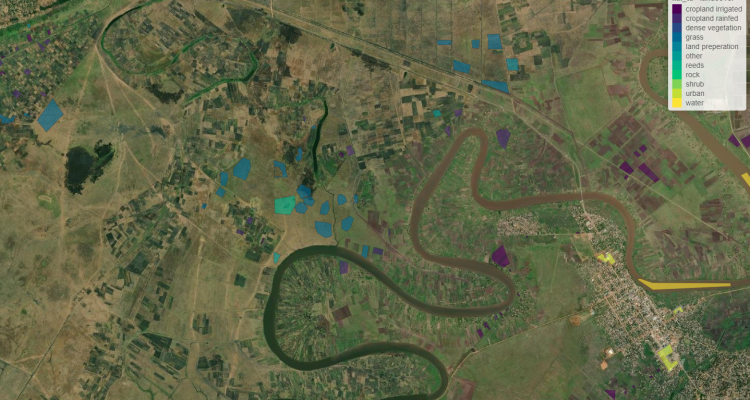
Project
Mapping smallholder irrigation in Mozambique using Remote Sensing
Using remote sensing and machine learning to detect where irrigated agriculture takes place is not as straightforward as it seems. From field data collection to algorithm parameters and accuracy assessments, each step to get from data to a useful map requires different choices and considerations, and each step influences the end result differently.
This project will ‘map’ what kind of choices there are and what the consequences are on the extent of irrigated agriculture. There are four phases to find this out. First, recent studies that mapped irrigated agriculture with RS will be analysed and used to determine where and how choices need to be made. The second phase is classifying 4 small areas in Gaza and Manica, and change the many parameters to figure out how irrigated agriculture can best be classified. In the third phase, the most promising results of phase 2 will be upscaled to map irrigated agriculture at the provincial level. In the final phase, key learnings will be summarized.
The goal of gathering the above knowledge is to provide tools and insights in how to classify irrigation, and to transfer this knowledge to local institutes. This does not mean that at the end of the project, all documents and models will be given to those institutes. Rather, from phase 2 onwards, they are taken along in the choices and methods, and learn from doing. This gives the opportunity to train the local institutes, but also to learn what their requirements are for such projects, so that the workflow can be adjusted.